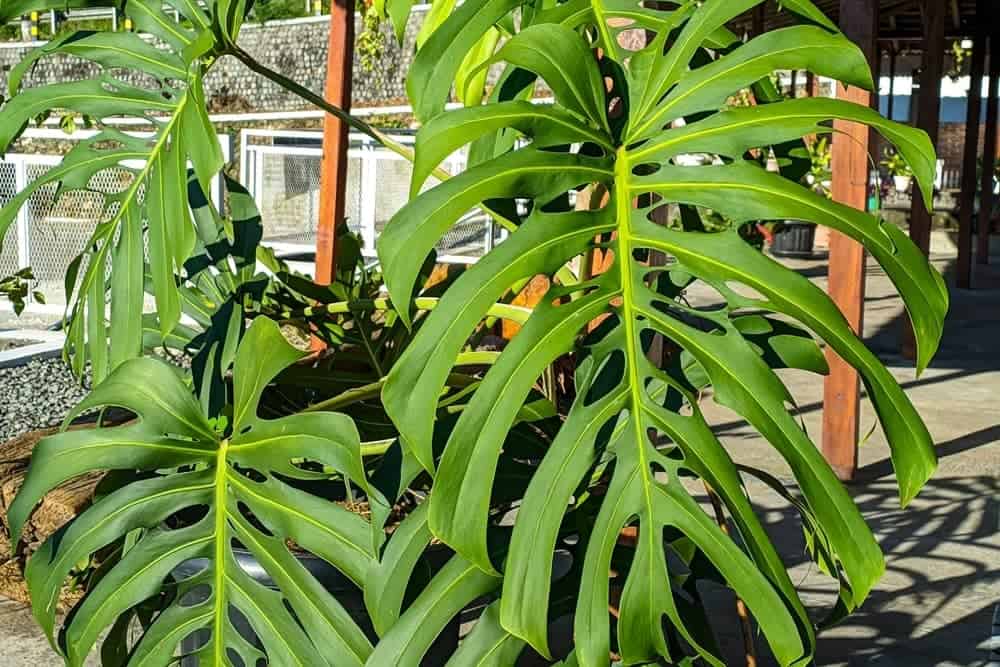When people look for indoor houseplants, they’re often recommended Monsteras — and for good reason!
These evergreen, tropical plants are fairly low-maintenance, with some varieties that suit even beginner plant parents. Most of them prefer bright, indirect light, with moderate humidity (50% or more) and warmth (18º–30ºC).
The Monstera deliciosa is the most well-known variety, but there are many other Monstera species, each with its own distinct features. Fenestrations, variegations, split leaves — these plants have ’em all.
Want to add to your plant collection? Looking for a more unique Monstera to show off? We’ve rounded up some Monstera varieties that are monstrously appealing.
Monstera Varieties Chart
| Unvariegated Monsteras | Variegated Monsteras | Split Fenestration Monsteras | Non-Fenestrated Monsteras |
| Monstera adansonii | Monstera ‘Thai Constellation’ | Monstera deliciosa | Monstera dubia |
| Monstera acuminata | Silver Monstera | Monstera pinnatipartita | Monstera standleyana |
| Monstera lechleriana | Monstera ‘Albo Variegata’ | Monstera punctulata | Monstera Peru |
| Monstera esqueleto | Monstera deliciosa ‘Aurea’ | Monstera subpinnata | – |
| Monstera obliqua | – | – | – |
Meet the Monstera
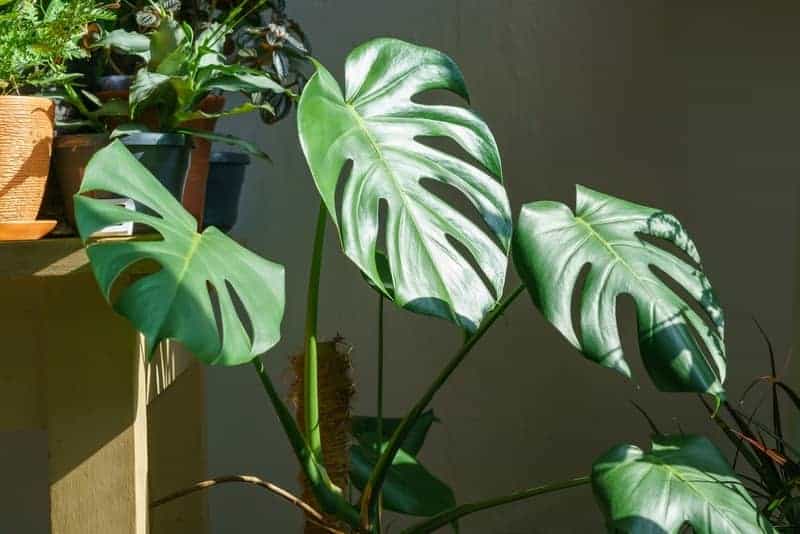
Like many aroid houseplants, Monsteras are a family of tropical plants native to South and Central America. They’re often found growing underneath or up the sides of large trees.
There are over 50 species of Monstera, from the iconic Monstera deliciosa to the rare, delicate Monstera obliqua.
They make popular houseplants thanks to their lush foliage and eye-catching fenestrations. Some species have cultivars with variegated (coloured) leaves, while a few don’t develop holes at all!
All species of Monstera are toxic to pets, including cats and dogs.
What to Know About Different Types of Monstera
Before we start listing off the different Monstera varieties, there are a few things to understand about these popular houseplants.
Fenestrations
This is a signature feature of Monsteras — the fenestrations! These are the holes in Monstera leaves, which form naturally in most (but not all) species.
You’ll typically see two types: regular fenestrations and split fenestrations.
Regular fenestrations are holes in the leaves that do not reach the edges. The Monstera adansonii is a common example, while the Monstera obliqua has the most extreme holes!
Split fenestrations (or split-leaf fenestrations) are holes that do reach the edges of the leaves. That causes them to “split” the leaf and create notches or slits.
The iconic Monstera deliciosa is a split fenestration plant, as are its variegated cultivars such as the ‘Thai Constellation’ and the ‘Aurea’.
There are even a few species that don’t have fenestrations at all.
Cultivars
Speaking of cultivars, these are different forms of a specific plant in the Monstera genus — not a different species.
Variegations are common examples of cultivars, as they are still the same plant species (e.g. M. deliciosa), just with defining features (variegated or coloured leaves).
You’ll often see “variety” and “cultivar” used interchangeably online, but we’ll be using “variety” to indicate a different Monstera species and “cultivar” to indicate different forms of a species.
M. deliciosa would be a variety (or species), and M. deliciosa ‘Aurea’ would be a cultivar!
Common names
Common names (or nicknames) for Monsteras can be pretty confusing, since one name can be used to refer to different species.
“Swiss Cheese Plant,” for example, usually refers to M. deliciosa, but some websites use it for M. adansonii. “Shingle Plant” is typically M. acuminata, but is also sometimes used for M. dubia.
We’ve tried to use the most common nickname for each species in this list. If you’re unsure about the plant you’re looking at, check the scientific name — that’s typically definitive!
Unvariegated Monstera Varieties
There are no frills for these members of the Monstera family, which all feature those iconic, dark green leaves with fenestrations.
Monstera adansonii

Size: Up to 1.5m indoors
Light: Bright, indirect light
Fenestrations: Big, oval holes
Both the M. adansonii and M. deliciosa are often nicknamed “Swiss Cheese Plant,” so check which one you’re getting, because the difference is big!
Monstera adansonii is smaller than M. deliciosa, usually only reaching 0.9–1.5m in height — or length, as M. adansonii is a climbing vine. Because of this, you might also see it called the Swiss Cheese Vine.
(It’s also sometimes called the Five Holes Plant.)
This evergreen vine is one of the most popular Monstera varieties, thanks to its low maintenance needs. It is a fast-growing plant with proper care, though, so you may need to trim it if it gets unruly!
Grow your M. adansonii in well-draining soil and bright, indirect sunlight (or a full-spectrum grow light). If you want bigger leaves and lush growth, give it a pole to climb.
Monstera acuminata
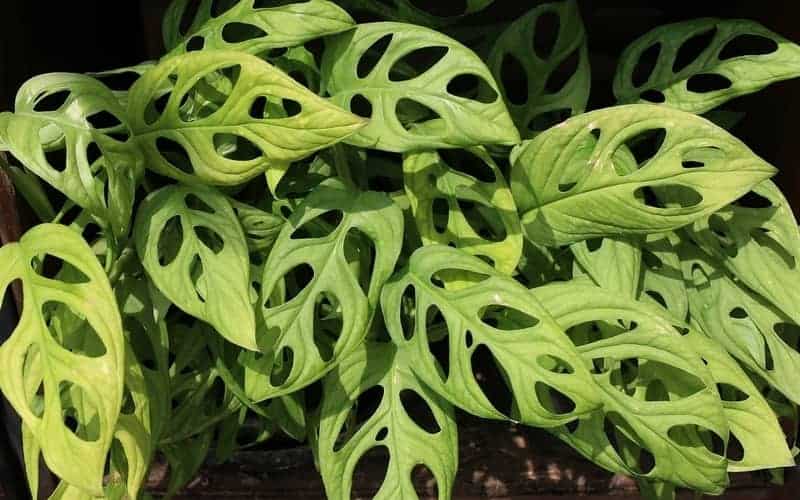
Size: Up to 2.5m indoors
Light: Bright, indirect light
Fenestrations: Oval holes when mature
Also called the Shingle Plant, Monstera acuminata resembles M. adansonii, but has smaller and smoother foliage. The leaf shape is also unusual — in Shingle Plants, one side of the leaf is slightly wider!
The nickname comes from the way the leaves grow in the wild. As the vine climbs and leaves emerge, they layer and overlap each other, like roof shingles.
Young plants tend not to have fenestrations. Instead, they’ll start appearing as the plant matures — usually when it’s around 0.3–0.5m tall.
Grow your Shingle Plant in moist, well-draining soil and lots of indirect light. It thrives most when given support like a moss pole.
Monstera lechleriana
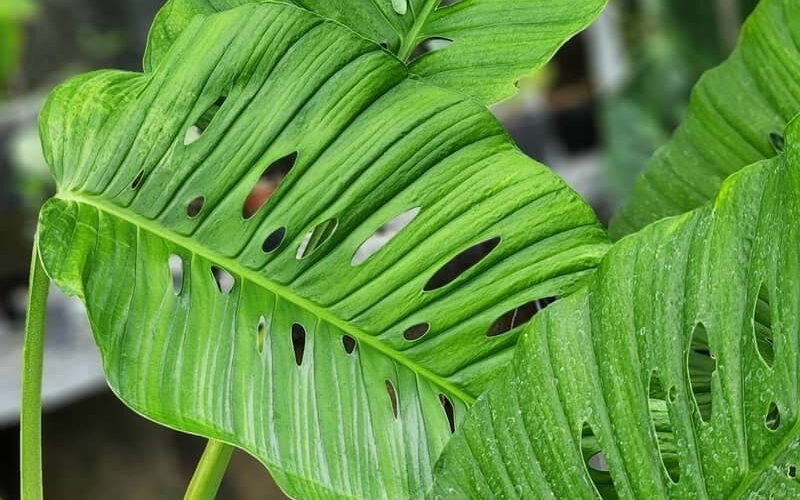
Size: Up to 2.0m indoors
Light: Bright, indirect light
Fenestrations: Oval holes near the middle
The Monstera lechleriana resembles the M. adansonii, although it’s far less common. Like M. adansonii, it has oval-shaped leaves in a glossy green colour.
Unlike M. adansonii, though, the fenestrations of M. lechleriana are smaller and closer to the middle ridge of the leaf. The undersides of the foliage can also have a paler colour.
M. lechleriana grows best in bright but indirect light, out of direct sun. Give it slightly acidic, well-draining soil and keep it consistently moist.
In the wild, M. lechleriana is actually a flowering plant, and can even bear fruit!
NOTE: This variety resembles another, much rarer plant — the Monstera acacoyaguensis. However, M. lechleriana usually only has one row of fenestrations.
Monstera esqueleto
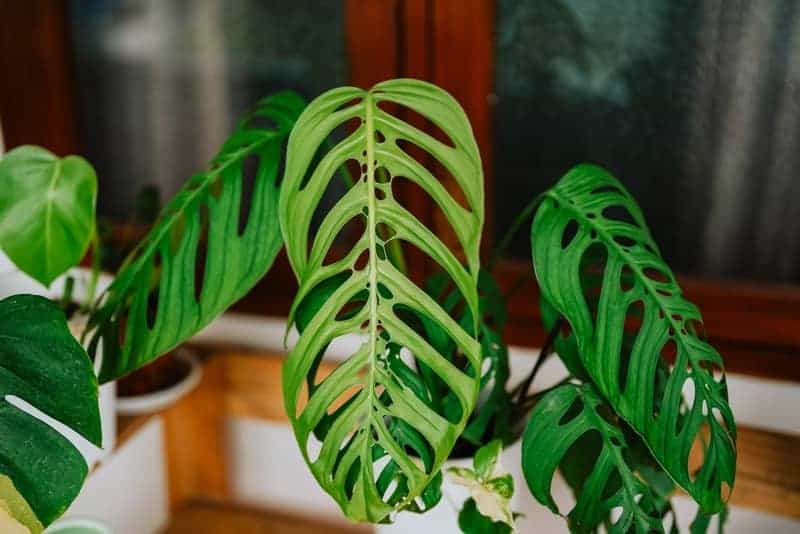
Size: Up to 3.0m indoors
Light: Filtered to medium, indirect light
Fenestrations: Multiple small and large holes
The origins of this Monstera species are shrouded in mystery, which suits its nickname, Skeleton Monstera!
It was once classified as Monstera epipremnoides, but has since been identified as a separate species. There remains little to no documentation of its native habitat.
Monstera esqueleto usually has two rows of fenestrations — tiny holes near the middle rib, and larger fenestrations on the sides that reach the edges of the leaf without splitting.
As the plant matures, the foliage gains a “droopy” look as it fans out. Keep it in moist but well-draining soil, and indirect light — the leaves can be sensitive!
Monstera obliqua
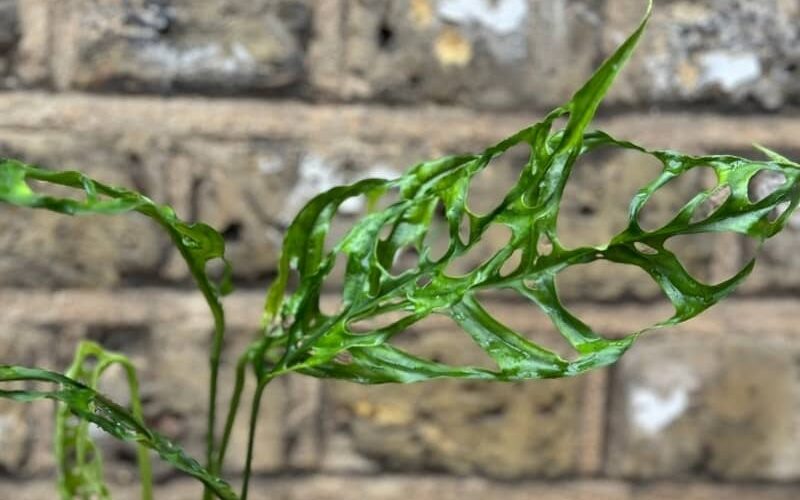
Size: Up to 2.0m indoors
Light: Bright, indirect light
Fenestrations: Very large
This is one of the rarest Monsteras, and the most delicate.
Like M. adansonii, the Monstera obliqua has several fenestrations on its leaves. But the holes in M. obliqua are more extreme — they’re almost 90% of the leaf surface, so there’s more hole than leaf!
M. obliqua is a tricky plant to care for due to its humidity requirements, needing about 80–85% humidity. If you can find one, it’s best grown in a terrarium or indoor greenhouse to maintain ideal conditions.
This Monstera is also much slower-growing compared to other varieties.
Variegated Monstera Varieties
If you want more showy plants, check out these variegated Monsteras! The dark green leaves have splashes or stripes of colours such as cream, silver, or yellow.
Variegated plants typically need lots of bright, indirect light since they absorb no chlorophyll through the coloured parts. Silver Monsteras are the exception, as they can tolerate some shade.
Keep in mind that when propagating Monsteras, there’s a chance the variegations may “revert” or become plain green, especially if the variegation is unstable. Your best chance is a stem with variegation around the leaves and nodes!
Monstera ‘Thai Constellation’
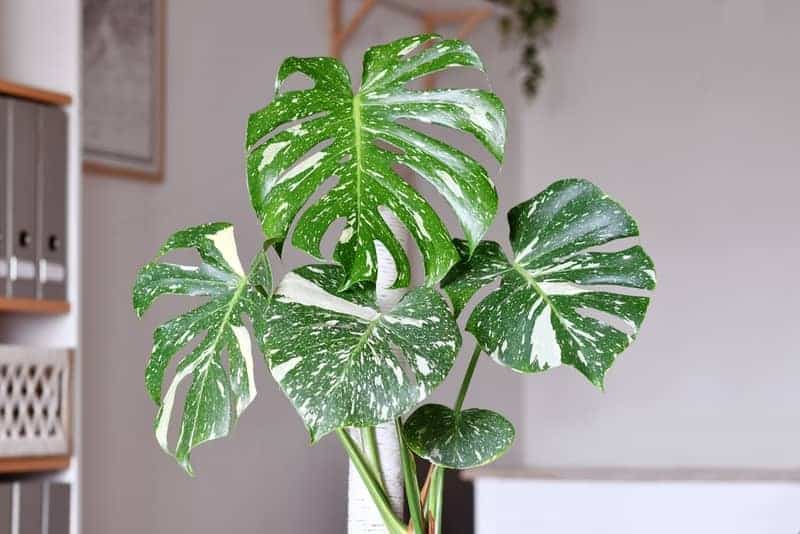
Size: Up to 1.8m indoors
Light: Bright, indirect light
Fenestrations: Split fenestrations
The Monstera deliciosa ‘Thai Constellation’ is one of the most popular variegated cultivars, and for good reason! Its leaves feature creamy-white splashes which resemble a starry sky — hence the name.
The Thai Constellation was developed in a lab in Thailand from tissue cultures. Thanks to this, it has fairly stable variegations and doesn’t usually revert to plain leaves.
Thai Constellation plants used to be much rarer, but cultivation and propagation have made them more available. Still, they’re pricier than non-variegated Monsteras!
Grow your Thai Constellation in a chunky, well-draining aroid mix. Be mindful of overwatering, as it can be prone to root rot.
NOTE: Be careful of plant stores that sell expensive variegated Monsteras with labels such as ‘Creme Brulee’ or ‘Platinum’. These are often Thai Constellations with more unusual variegation patterns.
Silver Monstera
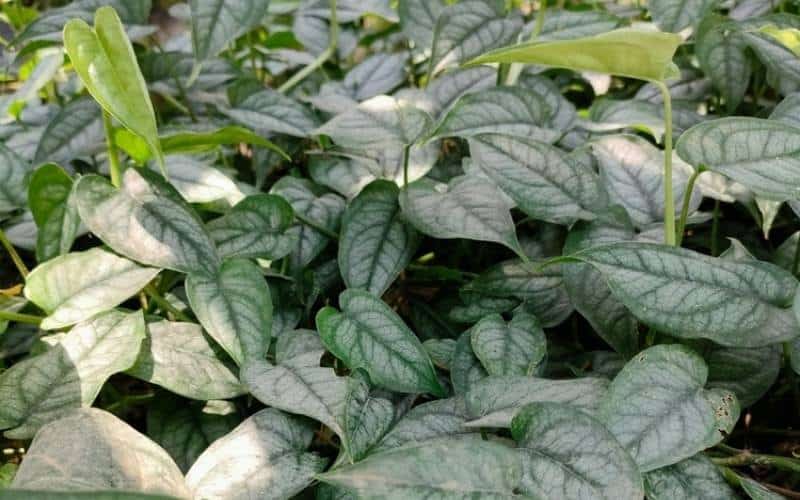
Size: Up to 2.4m indoors
Light: Bright, indirect light to part shade
Fenestrations: Small holes
This variegated Monstera has an understated beauty as a young plant. While the Silver Monstera (Monstera siltepecana) is a juvenile plant, it has bluish-green leaves with silvery patterns.
You’ll need to enjoy the variegation while it lasts, though! As the Silver Monstera matures, it loses the variegation, becoming dark green with fenestrations.
The M. dubia has similar variegation, so you can differentiate a young M. siltepecana from an M. dubia by the leaf shape — Silver Monsteras have longer, pointier foliage.
Silver Monsteras prefer warm environments and moderate humidity. They’re more tolerant of low light than other varieties.
Monstera ‘Albo Variegata’
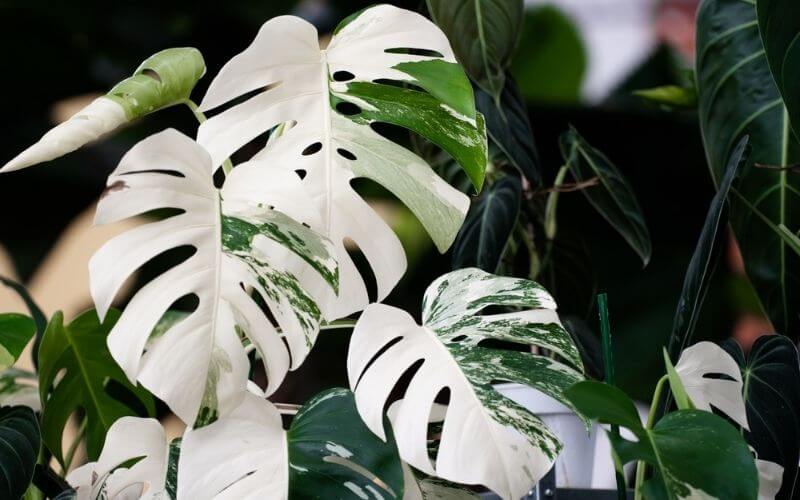
Size: Up to 1.8m indoors
Light: Bright, indirect light to part shade
Fenestrations: Split fenestrations
You’ll see this rare plant referred to by a few names, including Monstera Variegata, Monstera borsigiana ‘Variegata’, and Monstera deliciosa ‘Albo Borsigiana’.
They all go back to the same plant — the Monstera deliciosa ‘Albo Variegata,’ another variegated cultivar. Unlike the Thai Constellation, which is cream, the Albo Variegata has stark white or cream-white splashes.
Some leaves can even have a “half-moon” appearance, where the leaf is half-white and half-green!
Albo Variegatas need indirect light, as the foliage can scorch in direct sun. As a naturally occurring variegation, it is more unstable and may revert to green, especially after pruning.
Monstera deliciosa ‘Aurea’
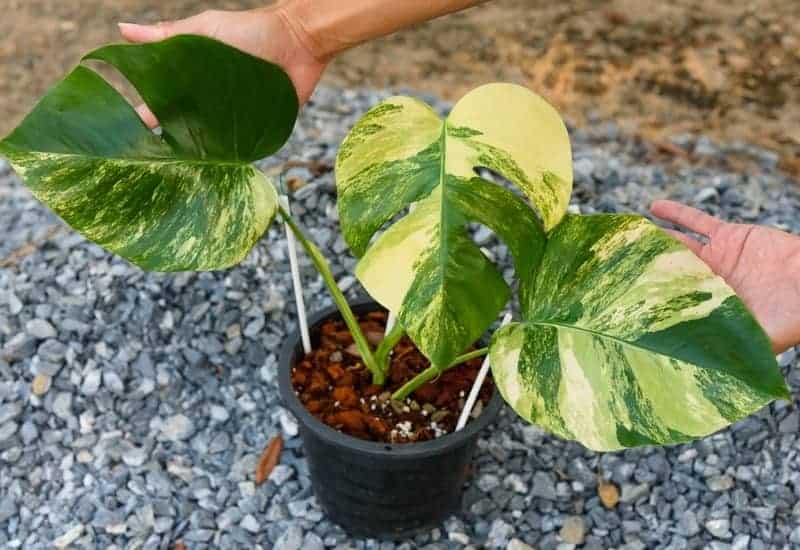
Size: Up to 1.8m indoors
Light: Bright, indirect light
Fenestrations: Split fenestrations
This is another variegated cultivar of the M. deliciosa, this time in yellow or lime! That gives Monstera deliciosa ‘Aurea’ its other nickname — Golden Monstera.
(Some shops may also label it the Monstera Marmorata.)
This is a much rarer M. deliciosa cultivar, which makes it more expensive. If you can get your hands on one, it’s often a prize in a houseplant collection!
However, the Aurea has a more unstable variegation than other cultivars, and it can revert in inadequate light. Give it lots of indirect sun and moderate humidity levels, plus rich, moist soil.
Split Fenestration Monstera Varieties
These Monstera varieties take the iconic holes to the next level with split fenestrations!
Monstera deliciosa
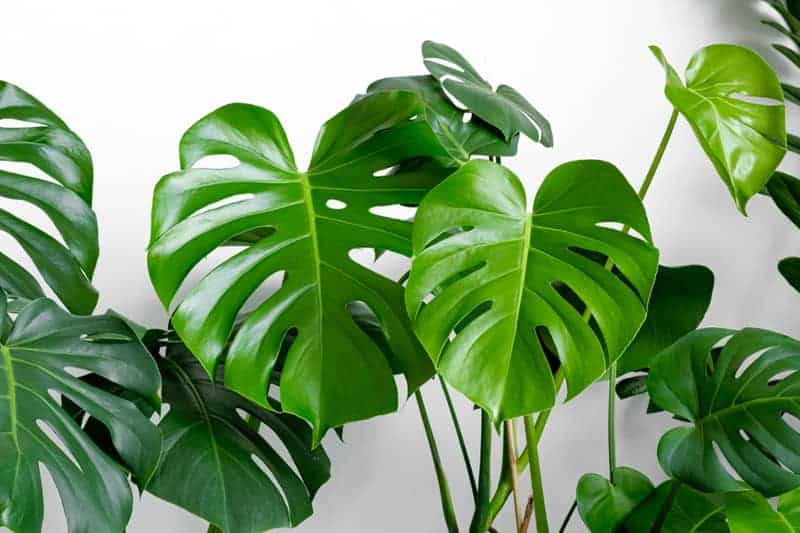
Size: Up to 3.0m indoors
Light: Bright, indirect light
Water when: Soil mostly dry
This is the most iconic Monstera plant, the classic Monstera deliciosa.
It has many nicknames, including Swiss Cheese Plant, Fruit Salad Plant, and Windowleaf. This species features large, heart-shaped leaves with fenestrations that often split.
M. deliciosa is a popular indoor plant, and is generally easy to care for. It needs plenty of bright, indirect light and well-drained, chunky potting mix to thrive.
Healthy, happy Swiss Cheese Plants can grow leaves up to 0.9m long and 0.75cm wide. In less-than-ideal conditions, though, the leaves may not produce fenestrations.
Outdoors (or in the wild), M. deliciosa actually puts out creamy flowers that lead to edible fruit!
NOTE: You may see plants being sold as Monstera borsigiana — that’s the same plant, according to the IPNI. Shops may use M. borsigiana or M. deliciosa var. borsigiana to distinguish a small-sized cultivar of the M. deliciosa.
Monstera pinnatipartita
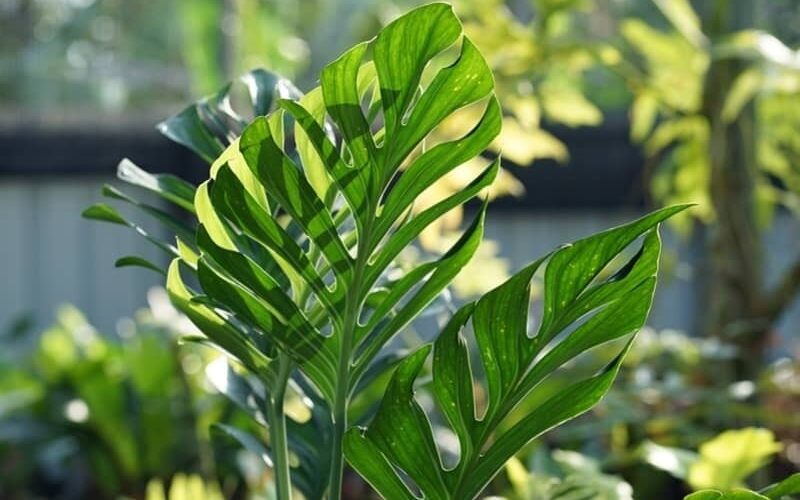
Size: Up to 1.8m indoors
Light: Filtered to medium indirect light
Water when: Soil partly dry
Sometimes called the Hurricane Plant, Monstera pinnatipartita is understated when young, before undergoing a stunning transformation as it matures.
As a juvenile plant, M. pinnatipartita has intact, deep green leaves. As it matures, it develops deep fenestrations that split and give the foliage a feathery appearance.
M. pinnatipartita is less vine-like than other Monsteras, thanks to the compact stems and small gaps between leaf nodes. With some support, it’ll grow mostly upright.
If you can find this rare variety, grow it in filtered to medium indirect light, and don’t let it dry out too much. It prefers moderate humidity and well-draining soil.
Monstera punctulata
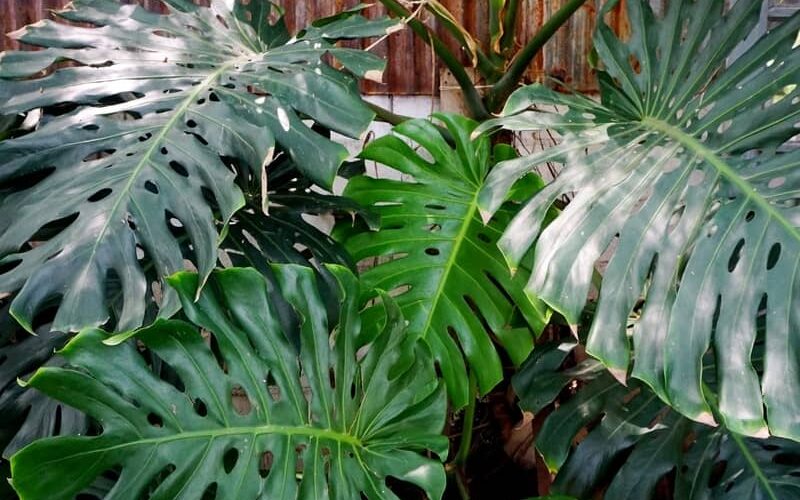
Size: Up to 3.0m indoors
Light: Bright, indirect light
Water when: Soil halfway to mostly dry
The Monstera punctulata is rare as an indoor houseplant, but it’s a looker!
Mature M. punctulata plants have very large foliage outdoors or in the wild, reaching 1.2m long and 0.6m wide. The leaves usually have both regular and split fenestrations that fill most of the leaf.
Indoors, the foliage can get up to 0.9 in length, but is usually smaller.
The foliage can be deep to bright green, with a rough texture on one side. The petioles (which connect leaf to stem) are sometimes flecked with white.
Monstera subpinnata
Size: Up to 1.8m indoors
Light: Bright, indirect light
Water when: Soil partly to halfway dry
This is one of the more unique-looking Monsteras, with “pinnate” foliage — meaning leaflets that are symmetrical on both sides.
Most split-fenestration Monsteras have slits in their spade-shaped leaves. For Monstera subpinnata, however, the leaf blades look like they grow from the centre and spread out like a fan (or a palm!).
M. subpinnata is difficult to find as a houseplant. If you find one, give it a good amount of bright to medium indirect light, alongside moderate humidity and chunky, well-draining soil.
It grows faster and more lush with supports like a moss pole.
Non-Fenestrated Monstera Varieties
While Monsteras are most well-known for their leaf fenestrations, you can find species that have intact leaves — no holes here.
However, these varieties are harder to find than other Monsteras. You’ll usually find them in specialty suppliers or online plant collectors who sell cuttings.
Monstera dubia
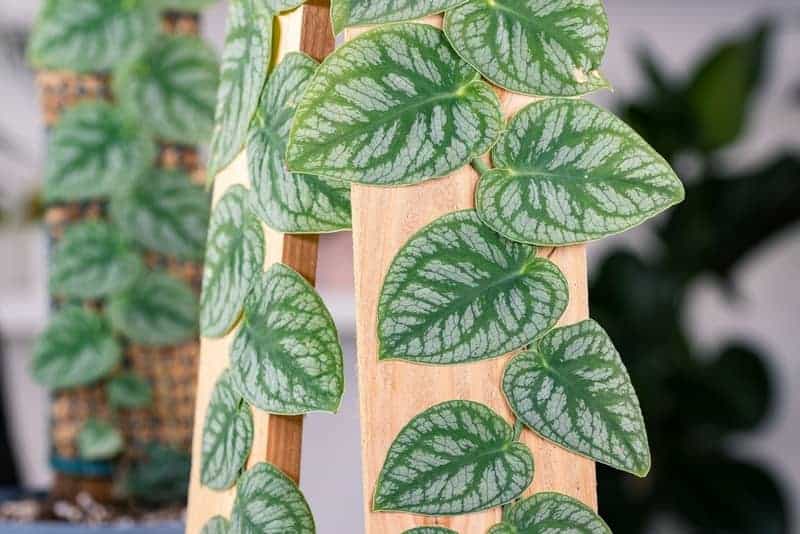
Size: Up to 1.8m indoors
Light: Medium indirect to low light
Water when: Soil partly dry
Alright, this one is cheating a bit. Monstera dubia can develop fenestrations when mature — it’s just highly unlikely to happen in houseplants!
Indoor M. dubia plants typically remain in a juvenile state, with small heart-shaped leaves that overlap like shingles. With adequate light, you’ll get light green or silver vein-like variegation.
This Monstera variety grows as a creeping or climbing vine, with foliage that grows close to the stem. Give it a wood plank or moss pole to climb, and it’ll be happy!
Monstera standleyana
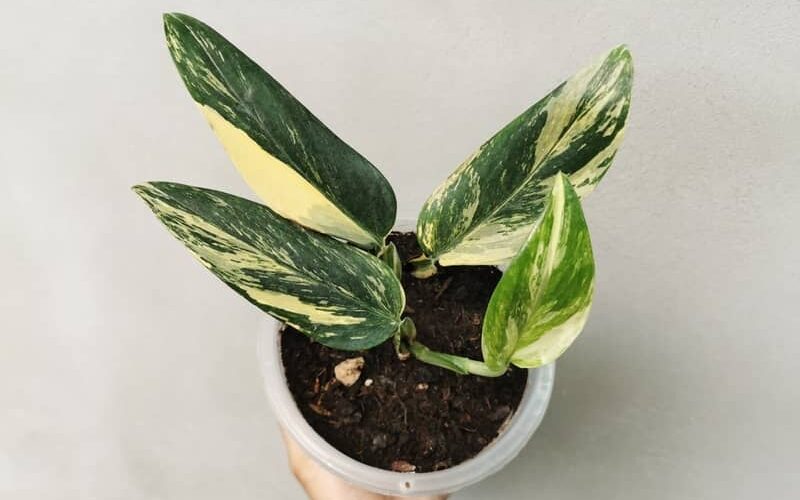
Size: Up to 1.5m indoors
Light: Filtered to bright, indirect light
Water when: Soil halfway dry
This rare Monstera is exceptional since it has variegated leaves but no fenestrations!
Monstera standleyana has arrow-shaped, glossy leaves that turn upwards, unlike other Monsteras that point down. The dark green foliage often has splashes of white, cream, or yellow.
The plant has a compact growth habit, so it looks very full, especially when grown up a board or pole. It prefers warm temperatures, moderate humidity, and rich potting mix.
You may see it sold as a Philodendron ‘Cobra’, but it’s still classified as a Monstera!
Monstera Peru
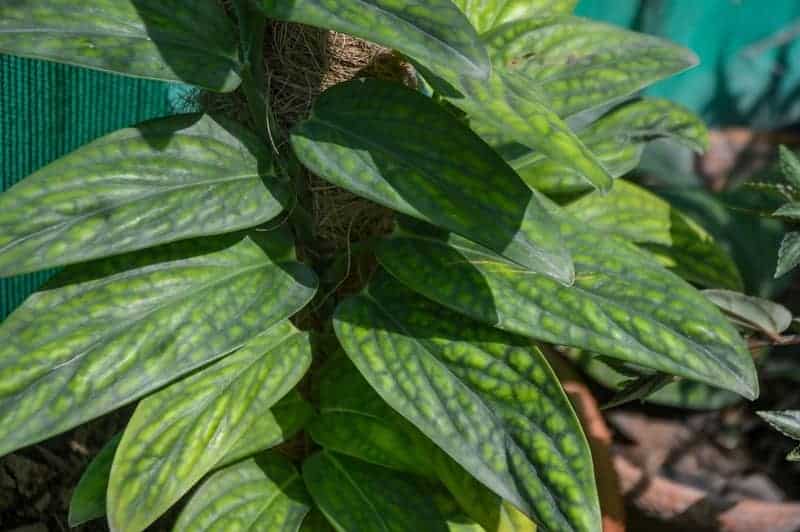
Size: Up to 2.4m indoors
Light: Filtered to bright, indirect light
Water when: Soil partly to halfway dry
Like other non-fenestrated Monsteras, the Monstera karstenianum ‘Peru’ is quite rare and has an unusual appearance.
The dark green, leathery leaves come in an arrow shape with a wrinkled or ridged texture. It’s fast-growing and likes to climb, so give your Monstera Peru a pole or trellis for support.
Grow your Monstera Peru in bright, indirect light, as direct sunlight can scorch the leaves. It prefers moderate humidity and moist, well-draining soil.
FAQs About Monstera Plants
Here are some common questions that people have about Monstera varieties!
What is the rarest Monstera?
There are several rare species of Monstera, as well as variegated cultivars.
Some of the rarest Monsteras include:
- Monstera obliqua
- Monstera punctulata
- Monstera standleyana
- Monstera deliciosa ‘Aurea’
Some cultivars like the Monstera deliciosa ‘Albo’ and Monstera deliciosa ‘Thai Constellation’ used to be rarer, but tissue cultivation has allowed them to become more widely available.
Do all Monsteras have holes in the leaves?
Monsteras are iconic for their leaf holes, but there are a few varieties without them!
Monstera standleyana and Monstera karstenianum don’t get those signature fenestrations. The leaves stay intact, even in maturity.
Other Monstera species like Monstera deliciosa, Monstera siltepecana, and Monstera pinnatipartita only develop splits or fenestrations as mature plants (and often need ideal conditions).
Meanwhile, varieties like Monstera Dubia can develop fenestrations when mature, but are unlikely to do so as indoor plants.
Is the mini monstera a Monstera?
No, it isn’t! Despite the nickname “mini monstera,” Rhaphidophora tetrasperma is not a type of monstera.
This small plant is native to Southeast Asia, and its leaves have split fenestrations much like a Monstera deliciosa. However, it’s a separate type of plant!
You may see it used interchangeably with Monstera minima, a Monstera species native to Panama and Colombia. The IPNI classifies R. tetrasperma and M. minima as different plants, though.
Online blogs and shops may incorrectly label R. tetrasperma as M. minima for better marketing.
Split-leaf philodendron vs Monstera
The split-leaf philodendron (Thaumatophyllum bipinnatifidum, or the Philodendron Selloum) looks like a Monstera, but they’re different species!
Both the Philodendron Selloum and the Philodendron Xanadu were reclassified from the Philodendron genus to Thaumatophyllum.
They have large, dark green foliage with angular lobes protruding outwards from the leaves. It gives the foliage a feathery appearance.
On the other hand, Monsteras have fenestrations (holes) that can sometimes “split” to form notches in the leaves.

